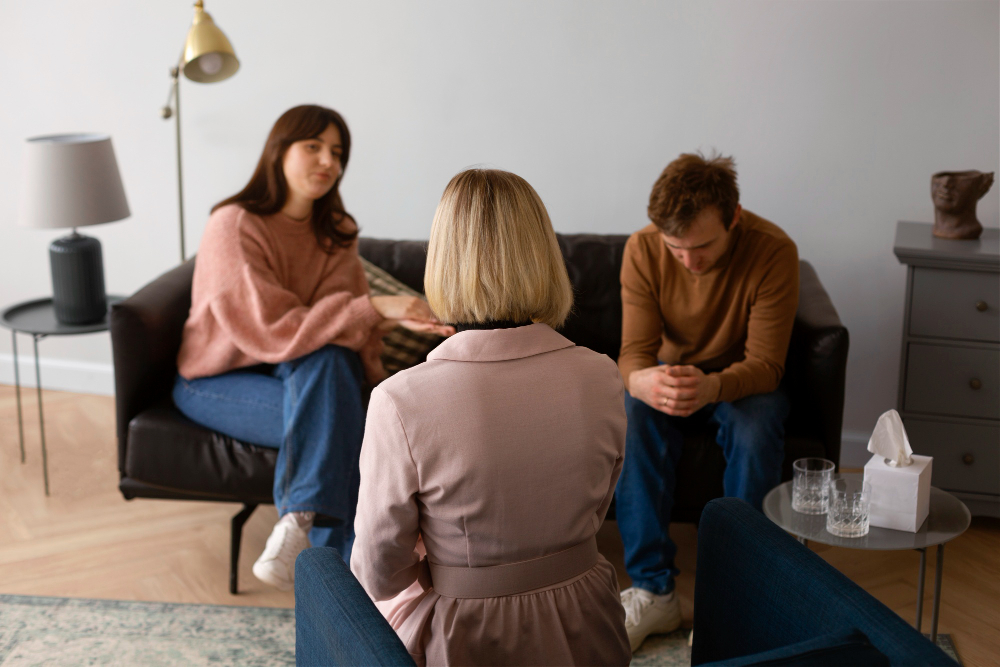I didn’t always know what to call it.
What I felt after a family gathering, after a Sunday service, after watching someone like me get mocked on screen again. I just knew that my heart beat faster, my body tensed, and a quiet shame sat in my chest like a stone.
It wasn’t one big traumatic event. It was little ones, repeated and normalized. Every “that’s not what girls wear,” every forced smile at school while people whispered. Every time someone asked if I had a boyfriend, even though I was dating someone I couldn’t talk about.
I told myself I was being sensitive. I told myself to move on. I told myself it wasn’t a big deal.
But my body kept remembering—even when I tried to forget.
LGBTQ Trauma Doesn’t Always Look Like What You’d Expect
We tend to think of trauma as something that happens in a single, terrifying moment. But for many of us in the LGBTQ community, trauma is more insidious. It’s chronic, complex, and often completely invisible from the outside.
LGBTQ trauma can result from:
- Growing up in a home where queerness was ignored, punished, or erased
- Religious environments that shamed or condemned your identity
- Bullying, harassment, or isolation during school years
- Being outed before you were ready—or living in fear of it
- Being treated as a “lesson” or “project” by people who wanted to fix or educate you
And the effects linger. Not because we’re weak. But because we’ve spent years—decades, even—learning to survive in environments that didn’t love us safely.
Emotional Survival Isn’t the Same as Healing
Here’s the tricky part: if you’re reading this, chances are you’ve survived. You’ve made it this far. Maybe you’re out now. Maybe you’ve even built a life that looks good on the outside.
But inside? You might still feel disconnected. On edge. Numb. Like you’re always a little too much, or not quite enough.
That’s not your fault. That’s what happens when your nervous system has been stuck in protection mode for too long.
For me, I didn’t realize how tightly I was wound until I finally felt safe. And then I cried—more than I had in years.
Common Signs You Might Be Carrying Queer Trauma
If you’re wondering whether this applies to you, here are some signals that helped me start paying attention:
Signs You Might Be Carrying LGBTQ Trauma
- You instinctively downplay your identity in certain spaces
- You avoid intimacy because it feels too vulnerable—or not safe
- You feel deep shame or anxiety after setting a boundary
- You struggle to believe that people genuinely like or love you
- You feel hyper-responsible for others’ comfort, even when it hurts you
- You always feel like you have to “perform” your queerness the right way
These aren’t flaws. They’re adaptations. They were strategies to stay safe in unsafe environments. And they made sense then. But if they’re still running your life now—they might be costing you peace, joy, and connection.
You Are Not “Too Sensitive.” You Were Trained to Scan for Danger.
I used to beat myself up for overreacting. For spiraling after one passive-aggressive comment. For shutting down when someone called me “brave” in that tone that wasn’t quite a compliment.
But healing taught me that my responses weren’t irrational—they were trained. I learned to read the room. To shrink. To people-please before I could even name it.
And now, I’m learning to unlearn.

What Helped Me Start Healing
Everyone’s path is different—but here’s what helped me:
- Affirming therapy with a provider who didn’t treat my identity like a topic of conversation
- Somatic work that helped me feel safe in my body again
- Group spaces where I didn’t have to explain myself—I could just be
- Creative rituals that reconnected me to joy, desire, and agency
And most importantly, I gave myself permission to call what I experienced trauma. That changed everything. Because once I stopped minimizing it, I could start releasing it.
“I thought healing would mean reliving the pain. But it actually meant creating space for joy I’d been denying myself.”
— LGBTQ Client, 2024
How Society Wellness Supports LGBTQ Trauma Recovery
At Society Wellness, the team doesn’t just tolerate queer identities—they center and celebrate them. Their programs are designed for people navigating real, lived experiences of marginalization, erasure, and chronic stress.
Whether you’re working through trauma, anxiety, or depression, Society Wellness offers:
- LGBTQ-affirming individual and group therapy
- Clinicians trained in trauma-informed care
- Spaces that reflect queer joy—not just queer pain
You don’t have to explain everything. You can just show up. And start from there.
📞 Ready to feel safe in your skin again?
Call Society Wellness at (888) 964-8116. You deserve care that sees all of you—not just the parts that are easy to name.
FAQ: LGBTQ Trauma and Support at Society Wellness
What is LGBTQ trauma?
LGBTQ trauma refers to the emotional and psychological harm caused by discrimination, rejection, identity-based violence, or living in environments that didn’t affirm your identity. It’s often chronic and cumulative—not always tied to one specific event.
Do I need a diagnosis to get help?
No. You don’t need a diagnosis to start therapy at Society Wellness. If you’re feeling stuck, disconnected, or emotionally overwhelmed, that’s reason enough to reach out.
What kind of therapy do you offer for LGBTQ trauma?
Society Wellness provides trauma-informed therapy that centers your lived experience. Modalities may include cognitive-behavioral therapy (CBT), somatic therapies, EMDR, and affirming talk therapy—all adapted to support LGBTQ clients.
Is the staff queer-affirming?
Yes. Society Wellness prioritizes hiring clinicians who are LGBTQ themselves or deeply trained in culturally competent, affirming care. This isn’t a checkbox—it’s foundational to their practice.
Can I join a group even if I’m nervous about sharing?
Absolutely. Many people feel unsure at first. Groups are structured to build safety and consent at every step, and you’ll never be pressured to share more than you’re ready for.

